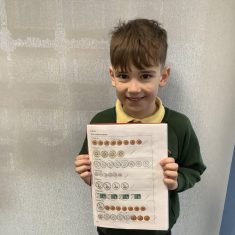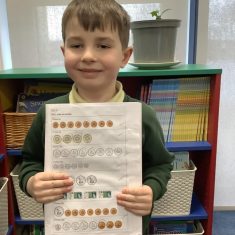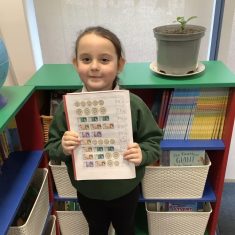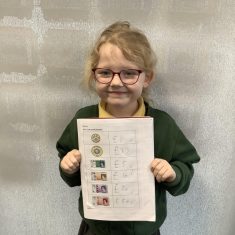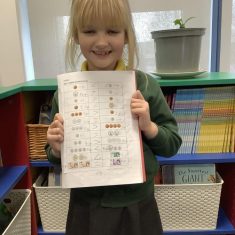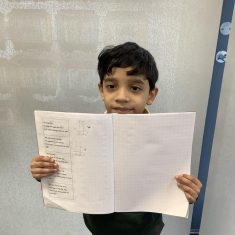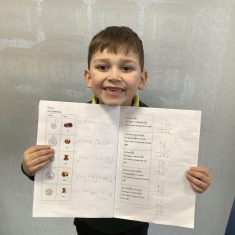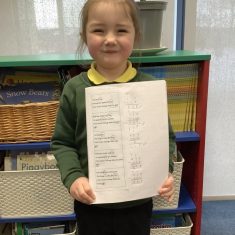In Maths, Year Two have been learning all about money. To begin, the children identified the value of coins and notes. Then, they applied their knowledge to find the total of an amount.
Next, the children investigated how they could make the same amount in different ways. For example, to make 10p, they could use a 10p coin or two 5p coins. This was quite tricky as the children had to make sure they didn’t repeat their answers but, also, be careful not to use coins which don’t exist. For example, they couldn’t say 3p and 2p make 5p, as there is no such thing as a 3p coin.
Once the children were confident adding amounts of money, they compared amounts to say whether they were greater than, less than or equal to one another. Previously, the children learned that £1 is the same as 100p. They were able to apply this knowledge to find other combinations which were equal to £1 and accurately compare them.
Finally, the children learned how to calculate with money by pretending to buy toys in a toy shop. They had to add the cost of two items together to find out how much they would cost altogether. Then, the children calculated the amount of change they would receive if they bought an item with different amounts of money. The children used their number bonds and related facts to calculate their answers mentally before solving some tricky word problems.

